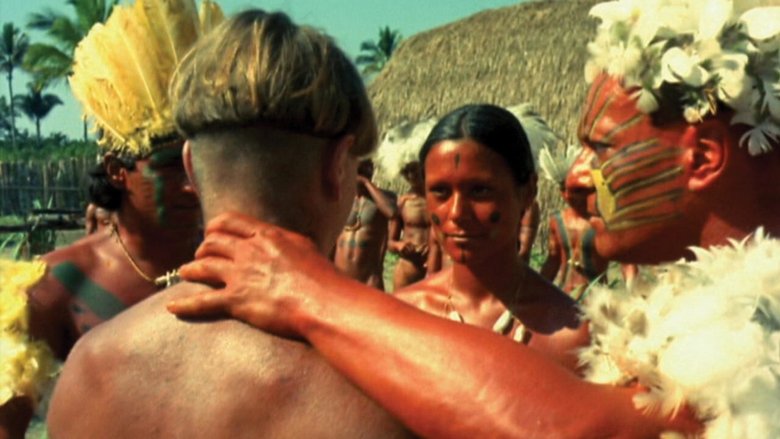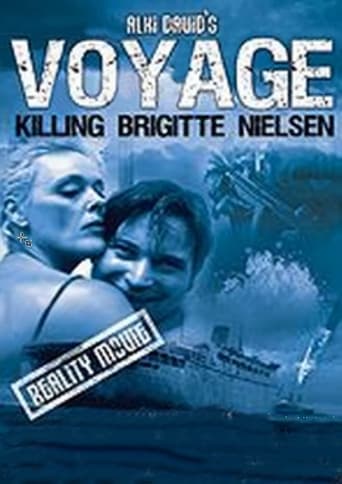

How Tasty Was My Little Frenchman (1971)
Brazil, 1594. The Tupinambás natives are friends of the French and their enemies are the Tupiniquins, friends of the Portuguese. A Frenchman is captured by the Tupinambás, and in spite of his trial to convince them that he is French, they believe he is Portuguese. The Frenchman becomes their slave, and maritally lives with Seboipepe.
Watch Trailer
Cast
Similar titles
Reviews
There is, somehow, an interesting story here, as well as some good acting. There are also some good scenes
A terrific literary drama and character piece that shows how the process of creating art can be seen differently by those doing it and those looking at it from the outside.
It is an exhilarating, distressing, funny and profound film, with one of the more memorable film scores in years,
Actress is magnificent and exudes a hypnotic screen presence in this affecting drama.
This film is the story of a Frenchman who was captured by natives in Brazil who thought he was Portuguese. This was a serious problem, as the tribe HATED the Portuguese and planned on eating him. However, instead of eating the guy right away, he was allowed to live among them for several months--and the film is about this in between time. However, the end does come and they DO kill and eat him."How Tasty Was My Little Frenchman" sure looked like a comedy based on the description from Netflix. And, the introductory portion was, at times, funny (as what happened and what the narrator said were NOT one in the same). But as for the rest of the movie, I could see nothing that was remotely funny. Now I am not saying the film is without merit --it just wasn't close to what I expected. I should note that in addition to being a completely unfunny film, it may well shock you with its depictions of full frontal nudity. Now this DID make sense, as these native tribes did NOT run around in loin cloths--hence the film would be interesting to historians, anthropologists and the like. But, as I said, it probably will be a bit of a shock seeing all these shaved genitals (as well as shaved eyebrows). And, sadly the story just isn't that interesting--and I kept expecting SOMETHING to happen that would make the viewing experience worth my time but didn't. Technically, it's well made but why make a dreary film like this?! If you are expecting a film like "Eating Raoul", keep looking...
This history plot of this movie was inspired from real facts depicted in Jean de Lery's book "Voyage en terre de Brésil" (portuguese: Viagem à terra do Brasil), which was written after what Lery himself witnessed before he left for Europe. The text which is read in the overture (in Portuguese) is a letter from Nicolas Durand de Villegagnon, the founder and leader of what should have been the "France Antarctique", a French colony in Rio de Janeiro, Brazil. This enterprise was made in the context of French religion wars, and there was a latent antagonism between protestant and Catholics which was brought to Rio, ending with the expulsion of several French, which left for the continent (the colony was located in an island about 1 km from land – today is the Naval College). These were the historical facts from which Nelson Pereira dos Santos started his movie, as nobody ever knows the destiny of some Frenchmen who were forced to left the island, so he made a history from this. The year of these events was 1557, as in Villegagnon's letter in the overture, and it is in Lery's book. By 1594 there was practically no more Tupinambá indians, killed many years before by smallpox and other diseases and Portuguese weapons (don't believe everything you read in Wikipedia). I've seen this movie in the big screen back in 1971, and I can tell it left a strong impression because of the nudity but most of people came to accept it first because everybody perceived a great sense of authenticity, even without any historical knowledge and that the Tupinambá's life really should have been the way it was portrayed by the director. The location of the movie was in Paraty, 1970, in a landscape very close to that of 400 years before, magnificent beaches, mountains and exuberant nature. However if you were Portuguese and felled in the hands of the Tupinambá that will not help much. A great movie, well ahead of its time and a precious and historically accurate tale about the European colonization of the then strange world of South America.
In 1594 in Brazil, the Tupinambas Indians are friends of the Frenches and their enemies are the Tupiniquins, friends of the Portugueses. A Frenchman (Arduíno Colassanti) is captured by the Tupinambás, and in spite of his trial to convince them that he is French, they believe he is Portuguese. The Frenchman becomes their slave, and maritally lives with Seboipepe (Ana Maria Magalhães). Later, he uses powder in the cannons that the Portuguese left behind to defeat the Tupiniquins in a battle. In order to celebrate the victory, the Indians decide to eat him. "Como Era Gostoso o Meu Francês" is another great low budget movie of the great Brazilian director Nélson Pereira dos Santos. The screenplay is very original and the story is spoken in Tupi. The film is shot using natural light most of the time and is very realistic. The actors and actresses perform naked and Ana Maria Magalhães is magnificent, showing a wonderful body and giving a stunning performance. The sound is produced by the Brazilian musician Zé Rodrix. This movie shows the beginning of the exploitation of my country by Europeans, focusing in the Portuguese and French at that time, trading with the Indians and exchanging combs and mirrors by our natural resources. This movie was awarded in the national festivals, such as the 1971 Brazilian Cinema Festival of Brasília (Festival de Brazília do Cinema Brasileiro) with Best Screenplay (Nelson Pereira dos Santos), Best Dialog (Nelson Pereira dos Santos and Humberto Mauro) and Best Cenograph (Régis Monteiro); Art Critics Association of São Paulo (Associação Paulista dos Críticos de Arte), with best Revelation of the Year (Ana Maria Magalhães) and some other prizes. My vote is eight.Title (Brazil): "Como Era Gostoso o Meu Francês" ("How Tasty Was My Frenchman")
I saw this movie at a college film festival back in the 70's - I have been waiting FOREVER for this movie to come out on video (finally it's out). It was made in Brazil, so I assumed that was why it hadn't made it to video yet. I have been checking video stores for the past 15 years waiting for this outstanding movie to come out! It is one of my all-time favorites - but be warned, it is weird, like Werner Herzog weird - its weirdness stems from its super-realism.The movie is based on a true incident back a few centuries ago, in pre-colonial times, when Europeans were first encountering the tribes in the Amazon. A white man is mistaken by a savage tribe of cannibals as their enemy, so they intend to kill him. Before they dispatch him, though, they make him part of their tribe (their custom). The entire movie is like watching a National Geographic documentary as he becomes an accepted member of their tribe. That's it. Cosmic plotline? No. Intense insight into the variety of human life? Definitely.Oh yeah... be warned... this film has definite nudity - this is not some Hollywood schlock flick about noble savages... this film tells it like it was (re-read above: National Geographic, super-realism)



